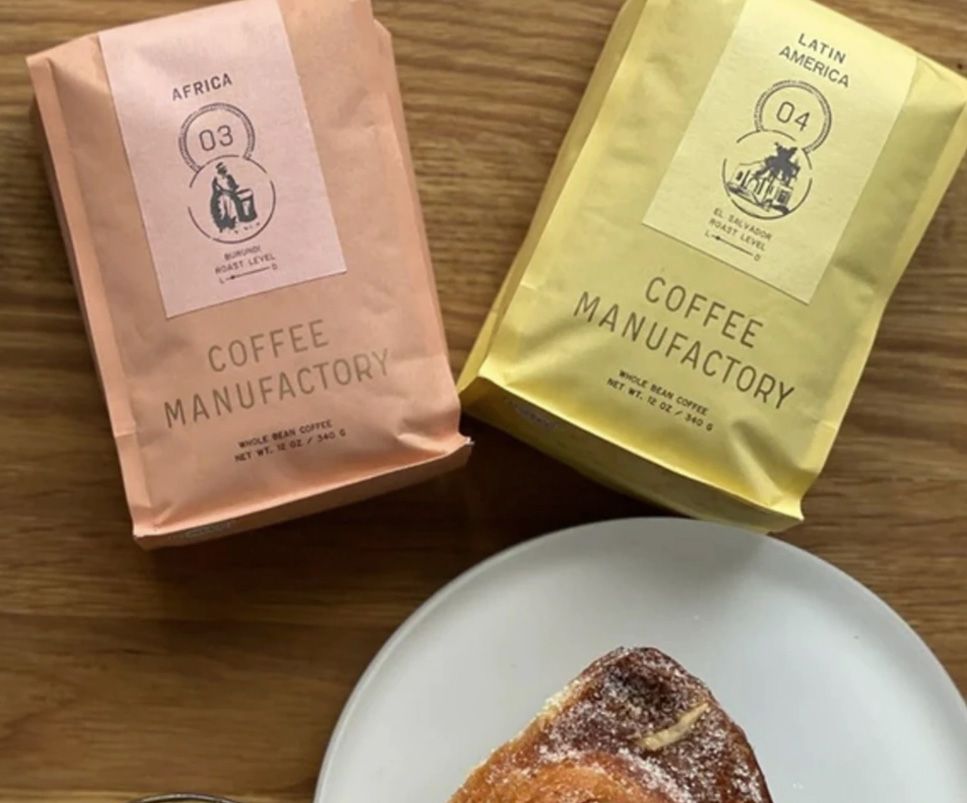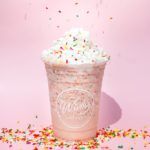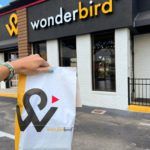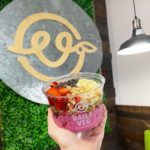Coffee has long been a popular beverage in the United States. Introduced in the 1700s, it truly took off after the Boston Tea Party in 1773, when switching from tea to coffee became a patriotic duty. For centuries, coffee has been a relatively inexpensive beverage that most people made and enjoyed at home.
Over the past several decades, there has been a major shift in how Americans consume coffee. It is no longer just something you drink to get energy – coffee has become an art. It has also become big business, with customers willing to pay $7 a cup or more to enjoy a premium coffee experience.
While there are many reasons why our attitude towards coffee changed, one of the biggest factors has been coffee shop branding. Although Starbucks was founded in 1971, it really took off in the 1990s, becoming a true coffee lover’s destination. Starbucks’ iconic branding plays a huge role in why most Americans are so obsessed with coffee and its many forms.
If you own a coffee shop, you can take a cue from Starbucks. Creating a brand is integral to the overall success of your business. Branding helps to define the meaning of your brand, or what you want customers to think of when they see your name and logo.
Creating a brand for your coffee shop isn’t easy, but it is necessary if you want to become or remain profitable. Below, we outline the steps that you can take to develop a branding strategy for your coffee shop. Once you’re ready to take your branding to the next level, reach out to Budget Branders for a quote on custom printed coffee cups, sleeves, and more.
Why Should You Invest in Branding for Your Coffee Shop?
It’s easy to think of branding as just a logo and color scheme. In truth, branding is so much more than that – it is the identity of your business. Creating a strong identity is vital to attract and keep customers in a market that is saturated with businesses just like yours.
As an initial matter, branding helps people recognize your business. Without cohesive branding, your coffee shop won’t necessarily stay in someone’s mind for a long time. But with a well-developed brand, people will immediately associate your logo or colors with your shop.
Going back to Starbucks, most people immediately recognize its mermaid logo and hunter green color scheme. Creating a memorable brand will ensure that your coffee shop stays in people’s minds, which increases the odds that they will visit your business when they want to pick up a coffee.
Branding also helps to develop trust. When you have a clear, cohesive brand, customers know that you are a credible business. It can also tell potential patrons what to expect from your business.
Having a great brand can also boost your advertising efforts. Branding is distinct from marketing. With branding, you are defining your business. Marketing involves using various resources to build positive associations in customers’ minds and to drive sales.
The most effective advertising campaigns incorporate a consistent logo or brand. If you want your marketing to be successful, then you will first need to establish a strong brand.
The Four Pillars of Branding – and How to Achieve Them
Creating a brand isn’t just about making a cool-looking logo (although that doesn’t hurt). Branding is actually far more complex than just hiring a graphic designer. If you focus only on having a great logo, then your brand will probably fall flat.
A solid brand should incorporate the four pillars of branding: your identity/purpose as a business, the experience that you want to share with people, the community that you build, and the way that you deliver this experience to customers. When you create a brand based on these four pillars, customers will flock to your business.
Brand Identity and Purpose
To begin the process, you have to start with the “why.” Why did you start your coffee shop? Why is it different from all of the other places that you can get coffee in your area?
People are drawn to businesses that share common values. In fact, they are often more drawn to the why than they are to the actual product you are selling. Starbucks is a great example of this – their coffee isn’t actually great, but their branding is. People are far more into the Starbucks brand than they are the coffee itself.
So to create a great brand, start by thinking about what makes your business unique. Is it your atmosphere? The type of beverages that you serve? The ingredients that you use? The fact that you roast your own beans? The expert-level baristas that you employ? Whatever it is, drill down to figure out an identity and purpose that will inform your branding.

Photo via The White Rabbit Café
Consider The White Rabbit Café and Pâtisserie in Greensburg, Pennsylvania. This independently-owned coffee shop offers a range of specialty teas, coffees, and pastries that are all hand-made from scratch in the café. Their branding conveys a sense of whimsy, along with an expectation that the shop will offer French-style treats. When a potential customer sees their logo and branding, they have a good idea of what this business represents.
Experience
Once you have figured out your identity and purpose, the next step is to consider the experience that you want to create. Starbucks famously offers a place to meet, work, or hang out, with comfortable armchairs and plenty of tables.
Think about what kind of experience you want people to have when they come to your coffee shop. Will they just pop in on the way to work? Will you offer board games and books to encourage customers to linger? Will your coffee shop be eclectic and funky, or have more or an upscale flair?

Photo via 317 Coffee
If you build your brand correctly, people will come for the experience – and the delicious coffee that you serve will be a bonus. Here in Michigan, 317 Coffee does a great job of building an incredible experience. Their space is filled with antique couches and chairs, shelves and ladders displaying trendy sayings and their personal merchandise (featuring their unique logo), cool lighting, and a big chalkboard with their menu on it. In short, when you visit 317 Coffee, you aren’t just getting a cup of coffee – you are getting an experience.
Community
Next, consider how you will build a community. A coffee shop is about more than just the drinks that it sells. In most towns and cities, coffee shops become gathering spots and a symbol of something more than just coffee.

Photo via Bitty & Beau’s Coffee
For example, Bitty & Beau’s Coffee has shops in 11 states across the South and Mid-Atlantic. These shops are staffed by people with disabilities, which has created a great sense of community. People visit Bitty & Beau’s specifically because of the community that has sprung up around these shops – and they keep coming back for the same reason.
Many coffee shops serve as a community hub: a place for students to get together and study, a meeting place for groups, and even a place to chat with business associates. When you are developing your brand, think about the type of community that you want to create around your shop. That should inform your logo, color scheme, and other aspects of your branding.
Delivery
Finally, when you create your brand, think about how it will be delivered. In today’s marketing environment, it is critical that your brand be social media-friendly. Like it or not, that is one of the most important ways to advertise your brand. When your brand is Instagram-friendly, it will only increase your marketing efforts (often without you spending any time or effort!).
Of course, your branding won’t just be on social media or your website. It also has to translate to your packaging, coffee cups, take-out bags, and other products. Branding shouldn’t just look great on one medium – you have to consider how it will look everywhere that you might use it.
Typically, this means sticking to a few complementary colors and using a script that is clean and easy to read. More complicated designs may look cool, but can be difficult to place on signs, business cards, or coffee cups. Think carefully about where you plan to deliver your branding and how it can be adapted to each use.

Photo via Coffee Manufactory
The Coffee Manufactory in Los Angeles is a great example of branding that translates well across social media, packaging, and more. Their logo – a drawing of a lion holding a flag inside of a broken circle – is paired with all caps writing in a similar hand-drawn look. The branding is consistent and looks fantastic on their bags of beans, merchandise, and bags. When you see it, you instantly know what it is – and what to expect.
Ready to Get Started? Reach Out for a Quote on Custom Disposable Products.
Once you have developed a strong brand, the next step is to use it consistently. Each and everything that you produce that can feature your branding should. This includes the disposable products that you use every day in your coffee shop.
Custom branded disposables aren’t just for the mega corporations like Starbucks and Coffee Tree Roasters. Independent coffee shops can and should carry their branding through to their disposables. Budget Branders can help.
We offer branded disposable coffee cups, cup sleeves, paper bags and more in quantities and at prices that make sense for small and medium-sized coffee shops. To request a quote or to learn more, click the “live chat” button on the bottom right of your screen, or fill out our online contact form.





















